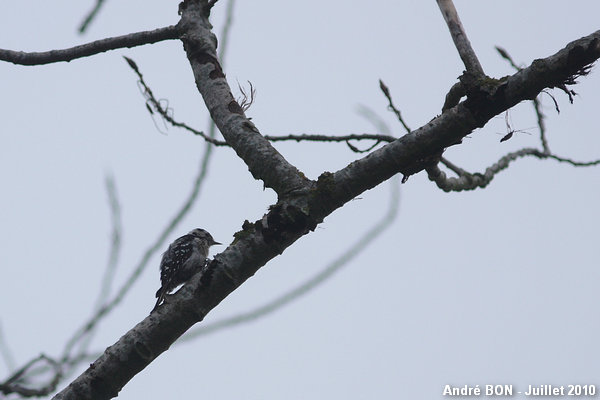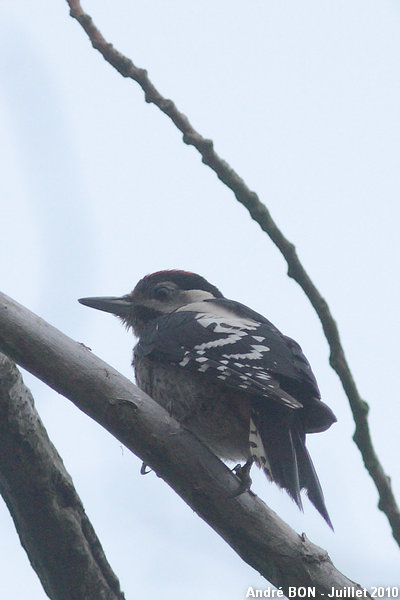

| Lesser Spotted Woodpecker (Dendrocopos minor (Linnaeus, 1758)) |


|
|
Scientific name: Dendrocopos minor (Linnaeus, 1758) Common name: Lesser Spotted Woodpecker French name: Pic épeichette Order: Piciformes Family: Picidae Size: Body size: 14 to 15 cm; Wingspan: 25 to 27 cm; Weight: 18 to 22 g. Habitat: You can observe this woodpecker in deciduous woodland areas. You can also find it in parks, gardens and orchards. It is missing in coniferous forests. It needs softwood (Alder, Poplar) or dead wood to excavate its nesting hole. Food: It feeds on insects and larvae found when moving along the highest branches of trees. So there is almost no competition with other woodpecker species. Nesting: Lesser Spotted Woodpeckers chisel out holes in trunks. The opening measures about 3cm in diameter. Females lay 4 to 6 eggs between may and June. Migration: Sedentary, the winter territory may be very large. Geographic area: Europe, Asia, North Africa. |
Like other members of the same family, the Lesser Spotted Woodpecker moves along branches by using its tail as a support. On each foot, two fingers are pointing frontwards and two fingers are pointing backwards. The curved claws enable to hook on tree bark. You can tell it apart very easily because of its very small size, about the same size as a Great Tit. Its black and white plumage shows horizontal stripes on the back and on the wings. Males have a red cap, this enables to differentiate them from females. |
| [To know more about the Lesser Spotted Woodpecker] [Next picture] [Top] |

|
The neighbour's poplar is dead because of the drought. Every day I can observe Great Spotted Woodpeckers They come to pick insects and larvae under the detaching bark. But on this grey morning of July my attention is attracted by a very small bird on the top of a branch. This is my very first observation of the Lesser Spotted Woodpecker. |
| [To know more about the Lesser Spotted Woodpecker] [Previous picture] [Top] |

|
I have been able to walk closer to the Lesser Spotted Woodpecker but my pictures, in the grey weather and with a low-angle view, are not very good. I had a close look at the Poplar during many days but the Lesser Spotted Woodpecker never shows up again. Today, the dead poplar has been cut because it has become too dangerous. I need then to find another spot and I need also to be very patient in the hope to replace these pictures with better ones. |